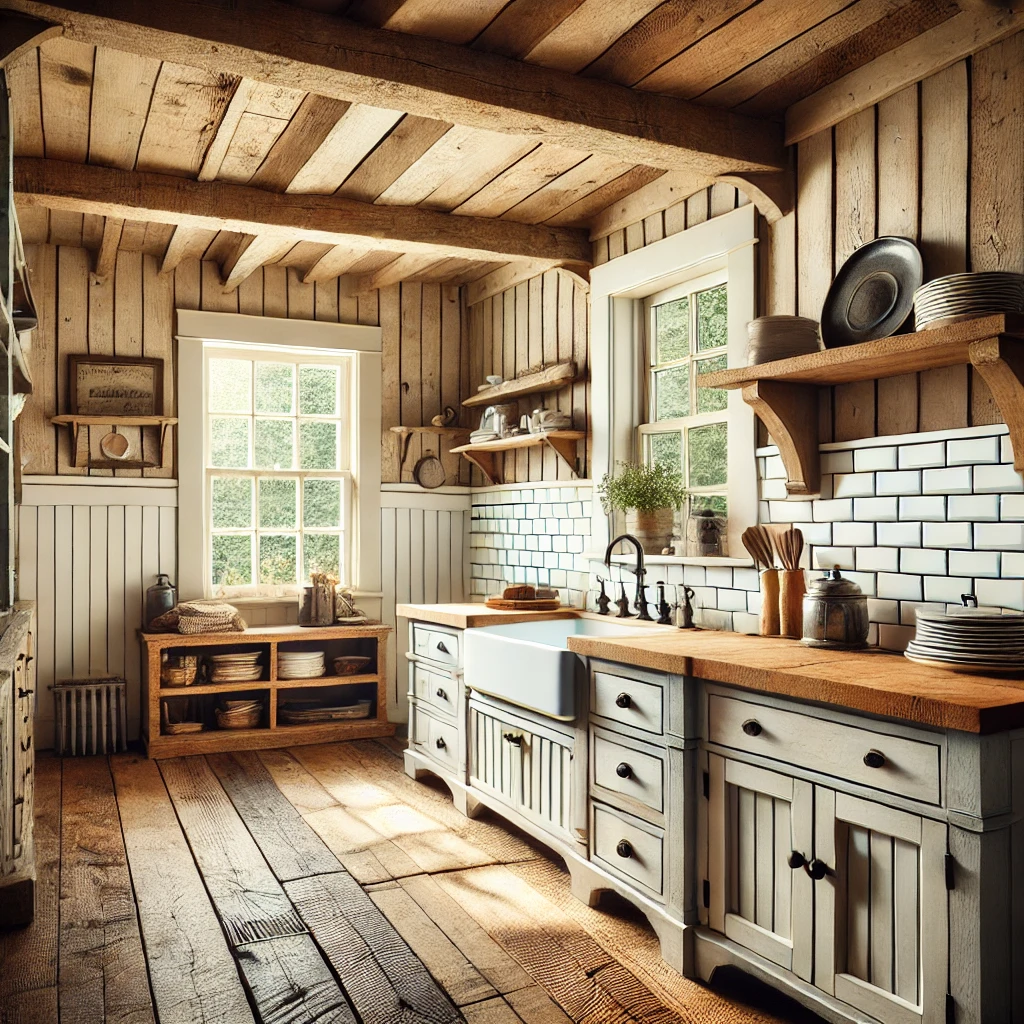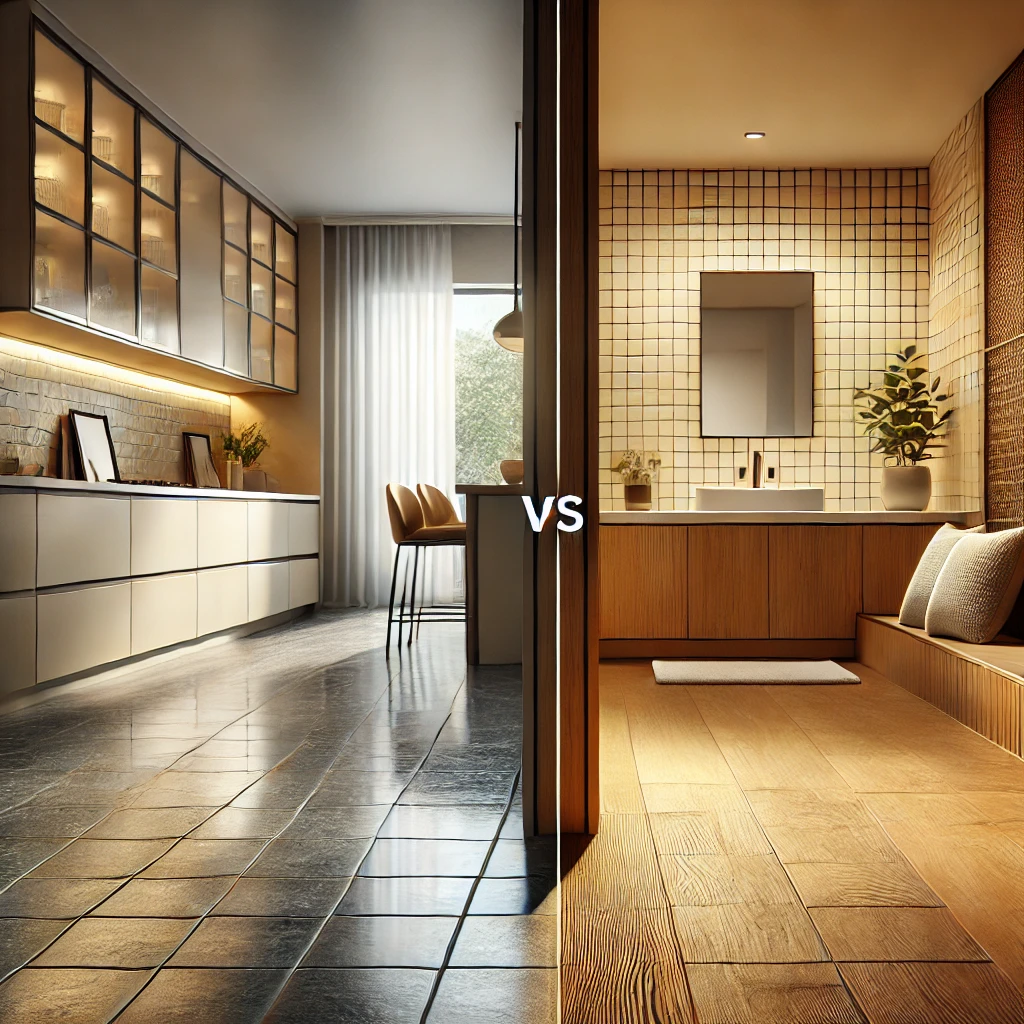Imagine stepping into your Canadian cottage after a long day—maybe it’s nestled by a serene lake in Muskoka or perched on a rugged Vancouver Island cliff. The air smells of pine, the fireplace crackles, and your feet land on tiles that feel like a warm hug from the countryside. That’s the magic of rustic farmhouse tiles, particularly shiplap and subway styles. These aren’t just tiles; they’re storytellers, weaving charm, durability, and timeless beauty into every corner of your cottage. Whether you’re dreaming of a cozy retreat or a stylish getaway, shiplap and subway tiles can transform your space into a haven of Canadian cottage charm.
In this guide, we’re diving deep—really deep—into everything you need to know about rustic farmhouse tiles: shiplap and subway styles for Canadian cottage charm. From picking the perfect tiles to installing them like a pro, we’ll cover it all. Expect practical tips, real-life examples, and a sprinkle of inspiration to help you create a space that’s as functional as it is beautiful. Ready to explore? Let’s get started!
1. Introduction to Rustic Farmhouse Tiles
What Are Rustic Farmhouse Tiles?
Let’s paint a picture: rustic farmhouse tiles are like the comfy flannel shirt of home design—earthy, warm, and effortlessly charming. They often boast natural tones like weathered gray, soft beige, or deep brown, with textures that whisper “lived-in” rather than “brand-new.” Think wood-grain patterns, distressed finishes, or classic shapes that nod to simpler times. These tiles aren’t about perfection; they’re about personality, making them a natural fit for the cozy vibe of a Canadian cottage.
Why Canadian Cottages Love Shiplap and Subway Styles
So, why are shiplap and subway styles stealing the spotlight? It’s simple—they’re the dynamic duo of cottage design. Shiplap tiles, with their overlapping plank look, bring that log-cabin warmth we crave in Canada’s wild landscapes. Meanwhile, subway tiles, with their sleek rectangular shape, add a touch of elegance that keeps things from feeling too rough-around-the-edges. Together, they strike a balance: rustic yet refined, durable yet delightful. Plus, they’re tough enough to handle our humid summers and frosty winters. What’s not to love?

2. The Problem: Finding the Perfect Cottage Tiles
The Challenges of Cottage Design in Canada
Designing a cottage isn’t like decorating a city condo. It’s a retreat—a place to unwind—so it needs to feel special. But here’s the catch: it’s also got to stand up to Canada’s wild weather swings. Think about it: one day you’re battling a snowstorm, the next you’re sweating through a humid afternoon. Your tiles need to keep up without cracking, warping, or growing a moldy mustache. Add in the fact that cottages often double as vacation rentals or family getaways, and suddenly, you’re juggling style, durability, and low maintenance. Overwhelmed yet?
Why Tile Selection Feels Like a Puzzle
Have you ever stood in a tile aisle, staring at a sea of options, wondering which one won’t betray you in six months? That’s the puzzle. You want rustic farmhouse tiles that scream “cottage charm,” but they’ve got to be practical too. Too porous, and they’ll soak up every spill. Too slick, and you’re slipping across the kitchen. And don’t get me started on the aesthetic—will that trendy tile still look good when your kids inherit the place? It’s a lot to figure out, but don’t worry—we’re solving it together.
3. Solution 1: Shiplap Tiles for Cozy Rustic Vibes
What Makes Shiplap Tiles Special?
Shiplap tiles are like the architectural equivalent of a campfire—they draw you in with their warmth and texture. Originally inspired by wooden planks used in barns and cabins, these tiles feature an overlapping design that creates subtle shadows and depth. Today’s versions are often ceramic or porcelain, mimicking wood’s look without the upkeep. It’s rustic charm with a modern twist, perfect for that “I just chopped firewood” vibe—minus the splinters.
Benefits of Shiplap in Canadian Cottages
- Cozy Factor: The texture makes any room feel snug, like a hug from your cottage itself.
- Tough as Nails: Porcelain shiplap tiles laugh in the face of moisture and cold snaps.
- Versatile Vibes: Use them on walls, floors, or even ceilings—shiplap doesn’t discriminate.
Creative Ways to Use Shiplap Tiles
Picture this: a shiplap-tiled accent wall in your living room, paired with a roaring fire. Or how about shiplap flooring in the mudroom, shrugging off muddy boots like a champ? You could even wrap your fireplace in shiplap tiles for a rustic centerpiece that screams “Canadian cottage charm.” The options are endless—where will you start?
4. Solution 2: Subway Tiles for Timeless Elegance
The Lowdown on Subway Tiles
Subway tiles are the little black dress of the tile world—simple, classic, and always in style. Born in New York’s subway stations over a century ago, these rectangular beauties (usually 3×6 inches) are laid in a staggered brick pattern. They’re sleek, they’re clean, and they’ve got a knack for making any space feel polished without trying too hard.
Why Subway Tiles Shine in Cottages
- Forever Chic: Their timeless design won’t look dated in a decade.
- Low Maintenance: Smooth surfaces and minimal grout lines mean less scrubbing.
- Adaptable: From crisp white to moody charcoal, they fit any cottage palette.
How to Style Subway Tiles in Your Space
Imagine a subway tile backsplash in your kitchen, reflecting the morning sun as you sip coffee. Or maybe a subway-tiled shower that feels like a spa escape after a day on the lake. They’re perfect for bathrooms, hallways, or even as a subtle floor choice. Want to keep it rustic? Pair them with wooden beams or vintage fixtures—elegance meets countryside charm.
5. Blending Shiplap and Subway Tiles Like a Pro
Why Mixing Styles Works Wonders
Why choose between rustic and refined when you can have both? Mixing shiplap and subway tiles is like pairing plaid with denim—it’s unexpected but oh-so-right. Shiplap brings the texture; subway adds the polish. Together, they create a space that’s dynamic yet cohesive, keeping your cottage from feeling one-note.
Tips for a Seamless Blend
- Divide and Conquer: Use shiplap on a feature wall and subway tiles on the floor for balance.
- Kitchen Combo: Try a subway backsplash with a shiplap island accent—functional meets fabulous.
- Color Play: Stick to a neutral palette (think whites or grays) to tie the styles together.
Ever wondered how to make your cottage stand out? This combo might just be your secret weapon.
6. Real-Life Examples: Cottage Tile Transformations
Case Study: A Shiplap Haven in the Laurentians
Meet the Tremblays, who turned their Laurentian cottage into a rustic dream. They installed shiplap tiles on the living room wall and entryway floor. The result? A space that feels like a warm embrace, perfect for après-ski cocoa. “It’s like the cottage hugged us back,” they said. The tiles held up through a brutal Quebec winter, proving beauty and brawn can coexist.
Case Study: Subway Sophistication in Prince Edward County
Then there’s the Patel family in Prince Edward County. They chose subway tiles for their kitchen and bathroom, opting for a soft gray finish. The tiles brightened their small cottage, making it feel airy and modern while nodding to its rustic roots. “We wanted easy upkeep and style—they delivered,” they shared. Humidity? No match for these champs.
7. Advanced Tip 1: Mastering Tile Installation
DIY vs. Professional: What’s Right for You?
Tackling tile installation yourself can save cash, but it’s not all sunshine and grout. DIY is great for small projects—like a backsplash—but a whole floor? That’s a beast. Pros bring speed, precision, and warranties. Ask yourself: do you have the time and tools, or is peace of mind worth the splurge?
Step-by-Step Installation Guide
- Prep the Surface: Clean, level, and dry—tiles hate surprises.
- Plan Your Layout: Dry-fit tiles to avoid awkward cuts.
- Mix Adhesive: Use a climate-friendly adhesive (Canada’s weather demands it).
- Lay Tiles: Start from the center, working outward—patience is key.
- Cut Tiles: Rent a wet saw for clean edges.
- Grout and Seal: Seal grout lines to fend off moisture.
Pro tip: Watch a YouTube tutorial first—seeing is believing!
8. Advanced Tip 2: Keeping Tiles Gorgeous for Years
Maintenance Hacks You’ll Wish You Knew Sooner
- Weekly Wipe-Down: A damp cloth and mild soap keep tiles gleaming.
- Grout Check: Inspect annually—reseal if it’s looking sad.
- Mop Smart: Skip harsh chemicals; a vinegar-water mix works wonders.
Troubleshooting Common Tile Issues
Cracked tile? Replace it quick—don’t let water sneak in. Moldy grout? Scrub with baking soda, then reseal. Prevention beats repair every time—trust me, your cottage will thank you.
9. Choosing Tiles That Fit Your Cottage Life
Factors to Weigh Before You Buy
- Climate: Porcelain beats stone in Canada’s freeze-thaw cycle.
- Usage: High-traffic spots need tougher tiles than a quiet bedroom.
- Style: Match your vibe—shiplap for rustic, subway for sleek.
Your Tile-Shopping Checklist
- Can it handle Canadian winters and summers?
- Is it slip-resistant for wet boots or bare feet?
- Does it vibe with your cottage decor?
- Fits your budget (including install costs)?
- Easy to clean—because who’s got time for scrubbing?
10. Tiles as the Heart of Cottage Decor
How Tiles Set the Mood
Tiles aren’t just flooring—they’re the soul of your space. Shiplap tiles whisper tales of rustic retreats; subway tiles sing of timeless grace. They tie your cottage together, setting the stage for everything else.
Pairing Tiles with Rustic Elements
- Wood: Reclaimed beams or furniture amplify the farmhouse feel.
- Metals: Brass or iron fixtures add a vintage kick.
- Textiles: Wool rugs or linen curtains soften the look.
What’s your cottage’s story? Let your tiles tell it.
11. Eco-Friendly Tiles for Sustainable Charm
Why Green Design Matters
Cottages hug nature—so why not hug it back? Sustainable tiles cut your environmental footprint and keep indoor air clean. It’s a win for you and the planet.
Top Eco-Friendly Tile Picks
- Recycled Glass: Shiny, green, and guilt-free.
- Porcelain Scraps: Made from leftovers, just as tough.
- Local Sourcing: Canadian-made tiles reduce shipping emissions.
12. Budgeting for Your Tile Project
What’s the Damage? Cost Breakdown
- Shiplap Tiles: $5–$15/sq ft
- Subway Tiles: $2–$10/sq ft
- Installation: $5–$10/sq ft
Money-Saving Tricks Without Cutting Corners
- Bulk Buy: Stock up for multiple rooms.
- Clearance Hunt: Snag deals at year-end sales.
- Mix Cheap and Chic: Use pricier tiles as accents only.
13. Tile Trends to Watch (and When to Skip Them)
What’s Hot in Rustic Farmhouse Tiles
- Bold Colors: Think sage subway tiles.
- Big Formats: Fewer grout lines, more wow.
- Textured Finishes: Distressed shiplap is trending hard.
Staying Classic in a Trendy World
Love a trend? Use it sparingly—accents age better than all-over statements. Stick to neutrals for the long haul.
14. Mistakes to Dodge in Your Tile Journey
Common Slip-Ups and How to Avoid Them
- Style Over Substance: Don’t pick pretty over practical.
- Grout Neglect: Unsealed grout invites trouble.
- Rushing Install: Haste makes waste—literally.
Lessons from Tile Fails
One homeowner skipped sealing their shiplap grout—cue mold city. Learn from them: plan, prep, and protect.
15. Conclusion: Your Cottage, Your Tile Story
Rustic farmhouse tiles—shiplap and subway styles—are your ticket to Canadian cottage charm. They blend rugged beauty with everyday ease, turning your space into a retreat you’ll never want to leave. Whether you’re drawn to shiplap’s cozy texture or subway’s sleek lines, you’ve got the tools now to choose, install, and love your tiles.
So, what’s stopping you? Dive into your tile project today—your cottage is waiting to shine!
16. FAQs: Your Tile Questions Answered
- Are shiplap tiles tough to clean?
Nope! A quick wipe with a mild cleaner keeps them fresh—grout’s the real diva to watch. - Can subway tiles feel rustic?
You bet! Pair them with wood or muted tones, and they’ll fit right in. - What’s the best tile for Canada’s weather?
Porcelain’s your MVP—resists cracks and moisture like a champ. - How do I mix shiplap and subway without chaos?
Use one for accents, the other for big spaces—harmony achieved.
Are sustainable tiles worth it?
Yes! They’re kind to the earth and often just as affordable—win-win.



